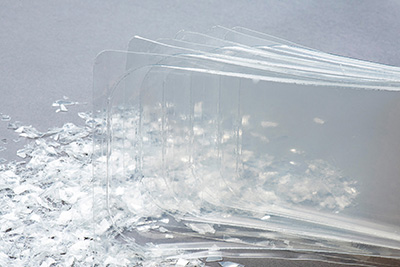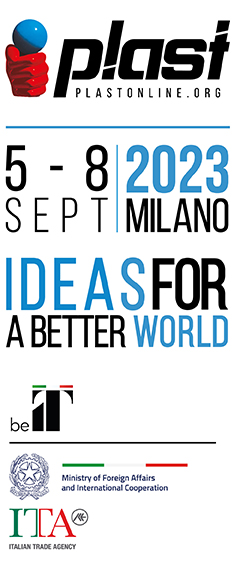| Plastics News |
Collaboration project focuses on the separation and recycling of multi-layer packaging on an industrial scale
April , 28, 2023 –. Multi-layer films are used for a wide range of packaging materials, particularly in the food industry. The European Green Deal stipulates that packaging must be recyclable to a large extent by 2030. In the future, the details will be regulated by the Packaging and Packaging Waste Regulation (PPWR). A draft regulation was presented in November 2022. However, up until this point, the recycling of multi-layer film has proven difficult because the film is made of different materials. A collaboration project involving the companies BASF, Krones, S üdpack, and Tomra has demonstrated that it is possible to separate PET/PE multi-layer packaging into its individual components and return them to the materials cycle as raw materials. According to BASF, during the first industrial trial conducted at a Krones pilot plant in Flensburg, the partners were able to completely separate as much as 69 percent of the PET/PE components and partially separate another twelve percent. This approach is special as it uses the existing infrastructure only to recycle the multi-layer packaging. A partnership involving all members of the value-added chain Decisive for the success of the project team were the collaborative efforts of the partners BASF, Krones, S üdpack, and Tomra. The companies combined their know-how in order to close the loop. The first phase of the project was initiated in early 2021 when Tomra conducted the first sorting trials with PET/PE trays. These trays had been manufactured by S üdpack using a “debonding adhesive” developed by BASF. S üdpack, a leading manufacturer of high-performance films for the packaging of food, non-food and medical products, has committed to becoming a zero-waste company. “Our contribution to the collaboration project was our long-standing expertise in lamination. Using our expert know-how in water-based lamination, we were able to develop multi-layer films that can be separated by caustic hot washing,” says Carolin Grimbacher, Managing Partner at S üdpack who is also responsible for R&D. To close the materials cycle, the recyclable multi-layer films first have to be sorted out of the waste stream. The main determinant of success for this step was the ability of the Autosort technology of Tomra to separate the recyclable PET/PE trays from non-recyclable trays. “Our NIR technology made this possible because it is able to detect the multi-layer PET trays containing the adhesive of BASF. With this it’s possible to sort the trays out of the waste stream and add them to the recyclables,” David Rüßmann, Manager Special Projects, explains. Krones, a company that, among other things, develops plastics recycling systems, joined the project team in July 2022. At one of the company’s pilot plants, trials were carried out to test whether it’s possible to separate laminated PET/PE films to their single layers in an industrial scale. A standard hot washing process commonly used for PET recycling was applied sucessfully and, as a result, the separated PET and PE can be re-used as monomaterials. “At our facility, we proved that the delamination of multi-layer films works. However, the separation of the films can still be improved by optimizing individual process parameters as well as, for example, the particle size of the flakes,” Thore Lucks, Head of Techology Recycling Solutions at Krones, explains. The process of separating the PET and PE components of the film is based on adhesives that were specifically developed for this purpose. These adhesives are used during the lamination of multi-layer films to join different functional materials. The lamination adhesive must have the best possible adhesive strength when required, but still makes it possible to easily separate the two films when it comes time to recycle. “Our water-based Epotal® adhesives already yielded very good results when separating multi-layer packaging in the laboratory. We consider it a huge success that we were able to completely separate 69 percent of the packaging during our very first industrial trial. We are confident that we will be able to further increase this figure by optimizing our debonding adhesive,” Kresimir Cule, Commercial Marketing Industrial Adhesives, BASF SE, states. Outlook: Further development of the lamination adhesive used The project is still ongoing. By adjusting various parameters of the recycling process and by further developing the lamination adhesive used, the project partners see additional opportunities for improving the recycling rate for plastics. The quality of the recycled materials is a major focus. The aim is to be able to re-use the PET for the manufacture of food packaging, while the PE fraction will be used as a raw material to make new packaging for the non-food industry. Studies on this will be carried out as well, the companies say. Source: BASF
|


